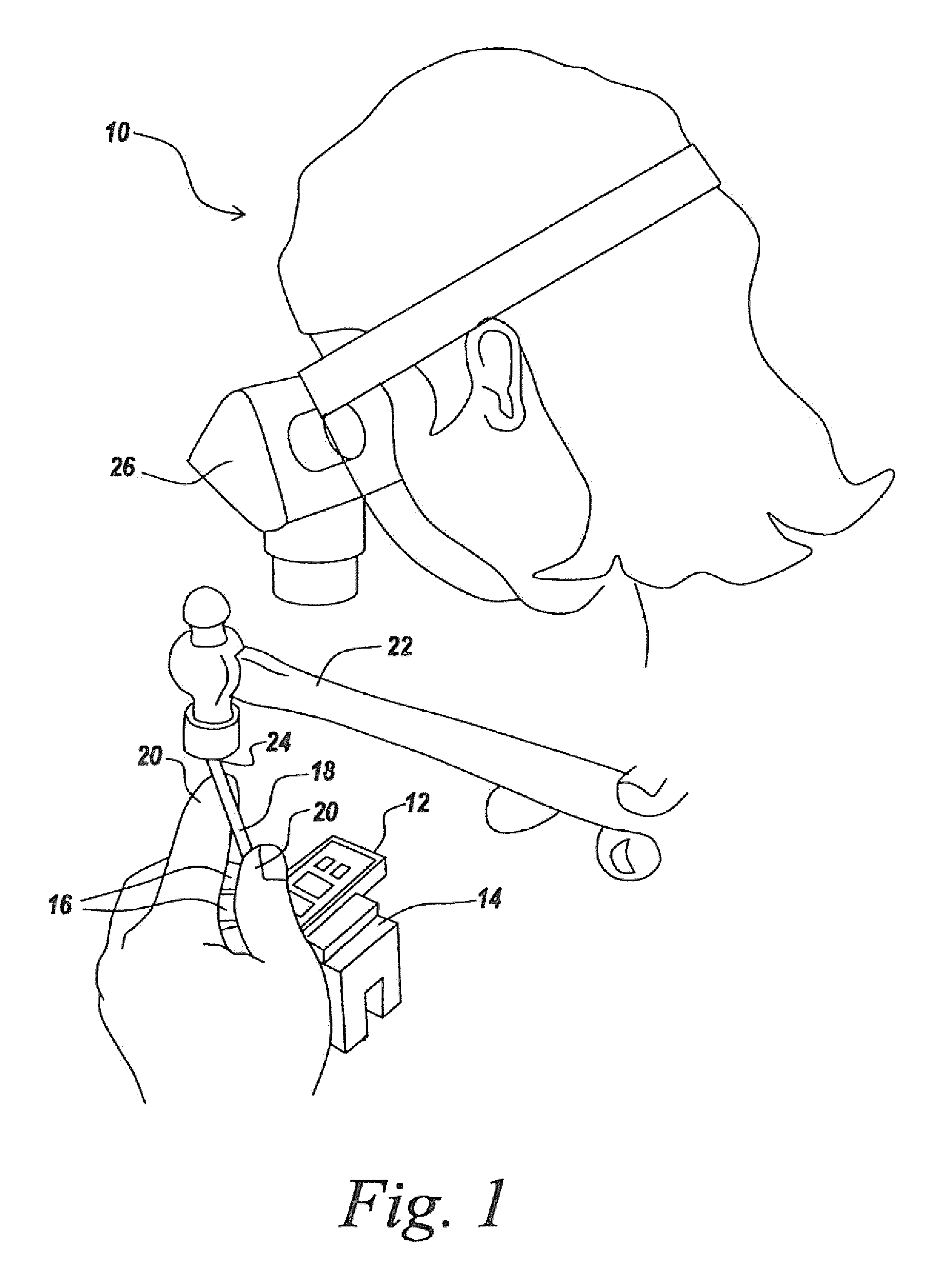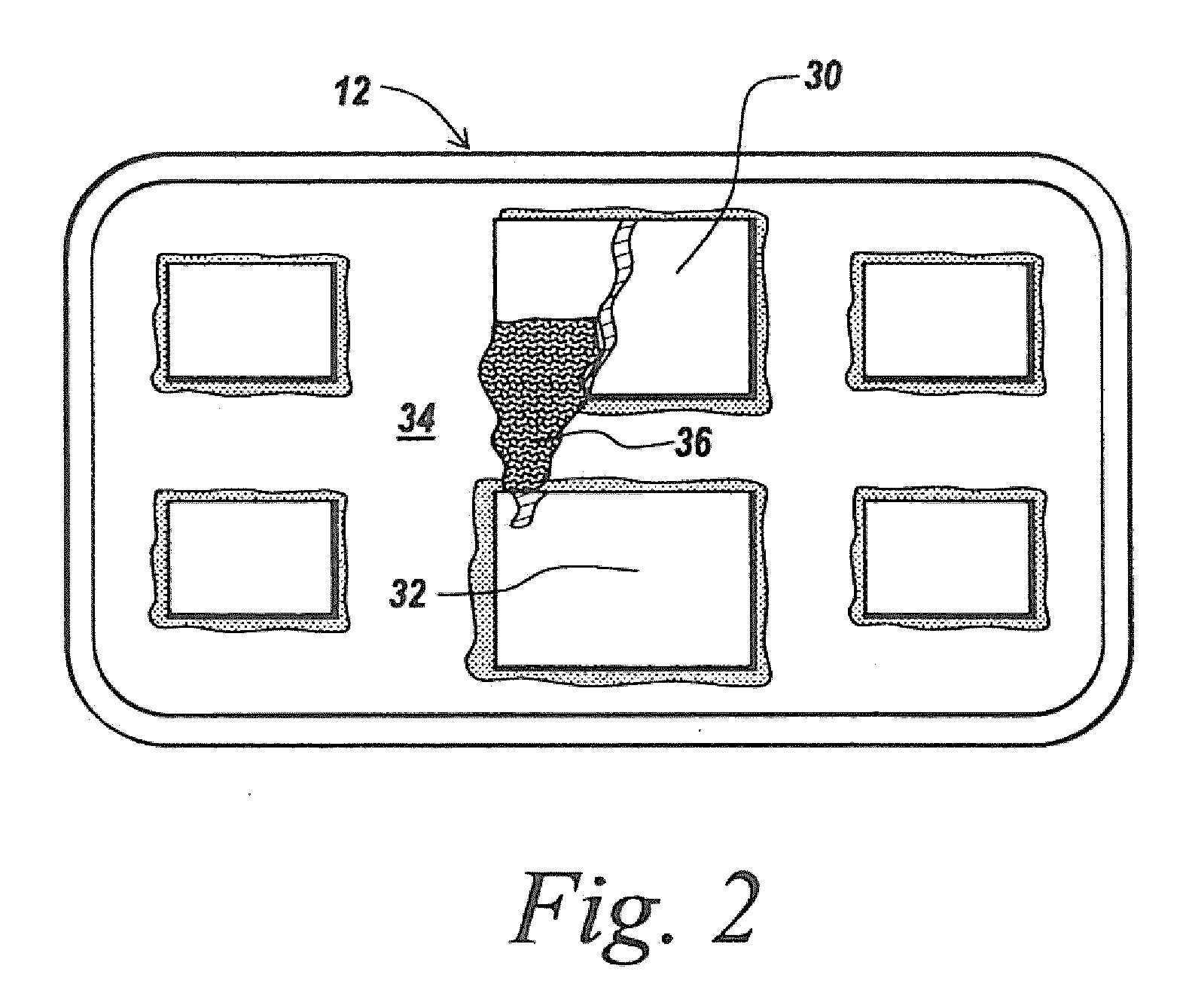Method and apparatus for reworking a microwave module
a microwave electronic and module technology, applied in the direction of soldering apparatus, manufacturing tools,auxillary welding devices, etc., can solve the problems of collateral damage, removal of original damaged components, damage to nearby components, etc., and achieve the effect of reducing collateral damage and reducing rework tim
- Summary
- Abstract
- Description
- Claims
- Application Information
AI Technical Summary
Benefits of technology
Problems solved by technology
Method used
Image
Examples
Embodiment Construction
[0034]Referring now to FIG. 1, in the prior art, an operator 10 is tasked to remove a faulty component from a microwave module 12, which is held in a handheld vise 14 by the individual's fingers 16 of one hand, while a chisel 18 in the form of a miniature scalpel is held by fingers 20 of the individual's same hand. A ball peen hammer 22 strikes the top 24 of chisel 18, with the hammer being manipulated by the other hand of individual 10. All of the above operation takes place under a microscope 26.
[0035]What will be appreciated is that aside from collateral damage mentioned before, the manual operation is exceedingly difficult since the operator has to both hold the vise in one hand as well as the chisel while hammering the top of the chisel with the other hand, with all components being in the view of microscope 26.
[0036]As can be seen in FIG. 2, which is a photograph of a module after an attempt to remove a damaged component by the method of FIG. 1, module 12 is left with a fractu...
PUM
 Login to View More
Login to View More Abstract
Description
Claims
Application Information
 Login to View More
Login to View More - R&D
- Intellectual Property
- Life Sciences
- Materials
- Tech Scout
- Unparalleled Data Quality
- Higher Quality Content
- 60% Fewer Hallucinations
Browse by: Latest US Patents, China's latest patents, Technical Efficacy Thesaurus, Application Domain, Technology Topic, Popular Technical Reports.
© 2025 PatSnap. All rights reserved.Legal|Privacy policy|Modern Slavery Act Transparency Statement|Sitemap|About US| Contact US: help@patsnap.com



